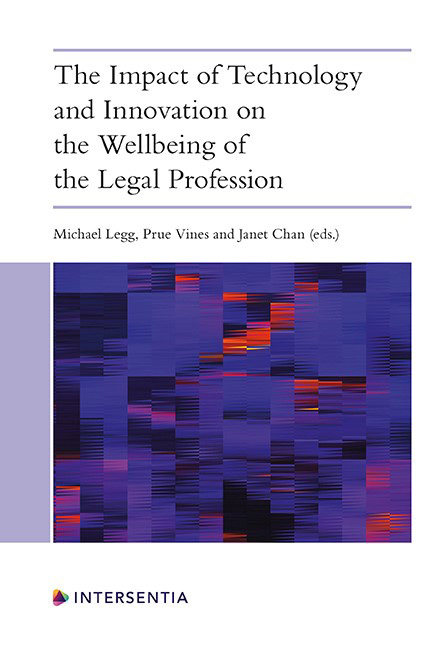Chapter 1 - The Changing Field of Lawyering and its Impact on Practice and Wellbeing
Published online by Cambridge University Press: 22 December 2020
Summary
INTRODUCTION
The legal profession is facing a convergence of forces, most notably significant advances in the capabilities of technology, economic pressures challenging existing business models, and globalisation, that together herald a momentous change in the practice of law. From at least the 1970s the practice of law has experienced a number of changes which have impacted on the types of roles that lawyers play and the economics of lawyering, but they were more gradual as compared to the increased pace of change which is currently in play.
Around the world the legal profession has started to focus on these forces of‘disruption‘ and what they mean for lawyers, in their various roles, and the users of law, corporations, government, but especially the disadvantaged. For example in June 2013 the German Bar Association contracted with consulting firm PROGNOS to produce‘Der Rechtsdienstleistungsmarkt 2030‘ (‘The Legal Services Market 2030‘) which outlines how the legal services market is expected to function in 2030. The Law Society of England and Wales published its‘Future of Legal Services Report‘ in January 2016. The American Bar Association (ABA) established a Commission on the Future of Legal Services which reported in August 2016 and has continued providing resources for the profession. In Australia the lead in seeking to understand these developments and formulate responses has been taken by the Law Society of New South Wales and its report on the Future of Law and Innovation in the Profession (FLIP). Academic attention has also been directed at these changes. A significant literature contributed to by both the profession and academics has developed on the changing legal profession and the impact of the various changes. Richard Susskind has predicted an increase in the use of technology, including without lawyers, commoditisation of legal work and a reconfiguration of the profession. Arguments about how the role of lawyers has changed and may change in the future have included both pessimistic accounts such as Susskind‘s, as well as more optimistic ones such as Trotter‘s, or Kronman‘s aspirational view of the lawyer-statesman.
- Type
- Chapter
- Information
- Publisher: IntersentiaPrint publication year: 2020

